The OGLE View of Microlensing towards the Magellanic Clouds
IV. OGLE-III SMC Data and Final Conclusions on MACHOs.
In the fourth and final part of the series presenting OGLE's microlensing studies of massive dark matter compact halo objects (MACHOs) towards the Magellanic Clouds we present results obtained with OGLE-III SMC data from years 2001-2009.
There were 5.5 million objects observed frequently over 14 square degrees. Among them we found three sound candidates for microlensing events, with two of them detected in real-time by EWS: OGLE-SMC-02 (EWS 2005-SMC-001) and OGLE-SMC-03 (EWS 2008-SMC-001).
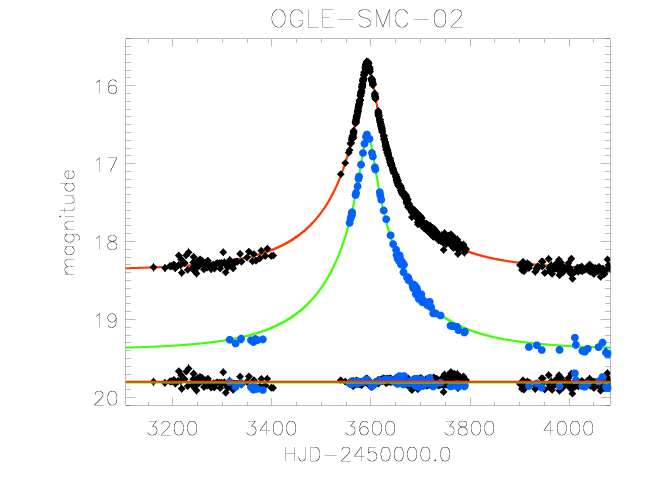
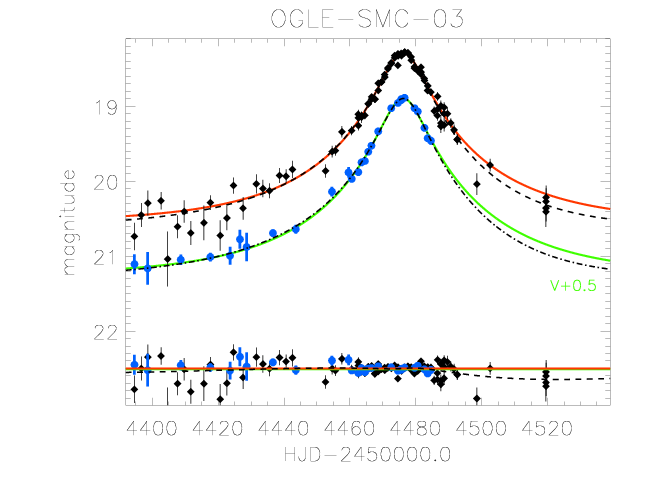
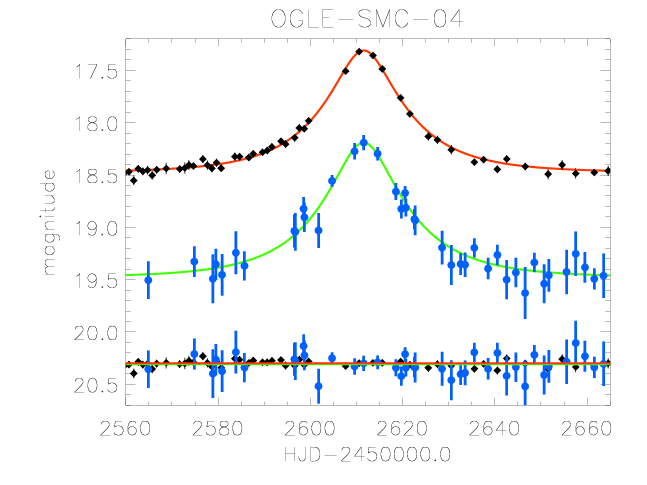
Figures show three events detected automatically in the OGLE-III SMC data along with the best microlensing models (solid line for standard model, dashed line for parallax). Black dots are for OGLE I-band, blue for OGLE V.
After careful tacking of the blending using archival HST images and
simulating the observed luminocity function, the detection efficiencies
for each field were obtaind and the optical depth was calculated as
1.30±1.01×10e-7.
Such value is in agreement with expected signal from self-lensing in the
SMC and the contribution from lenses from the Galactic disk and leaves
no room for MACHOs.
The only MACHO candidate is the 10 MSun binary black-hole candidate OGLE-SMC-02,
modelled by Dong et al. (2007), however, it can not be ruled out that
the event is due to self-lensing.
Event OGLE-SMC-03 exhibitied significant parallax signal, thus it is
most likely to be cause by an M-dwarf lens from the Galactic disk.
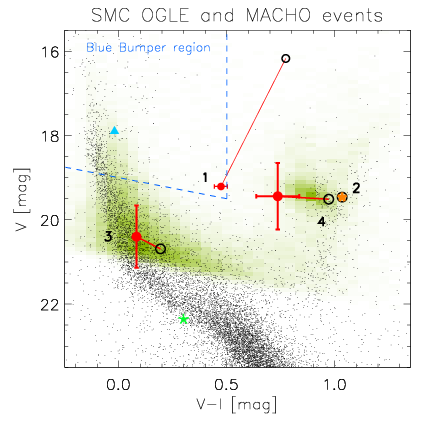
Color-magnitude diagram of the SMC100.1 field from OGLE (green background) and HST (black dots). Source stars of the OGLE LMC events are marked with the red dots and numbers. Remaining symbols denote MACHO events from 1997 and 1998.
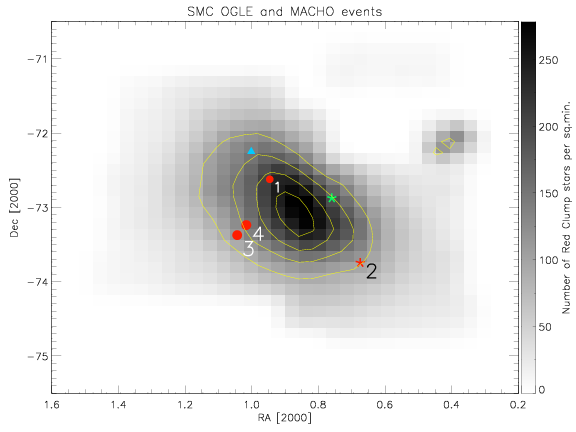
Positions of the OGLE and MACHO events on the Red Clump density map of
the SMC.
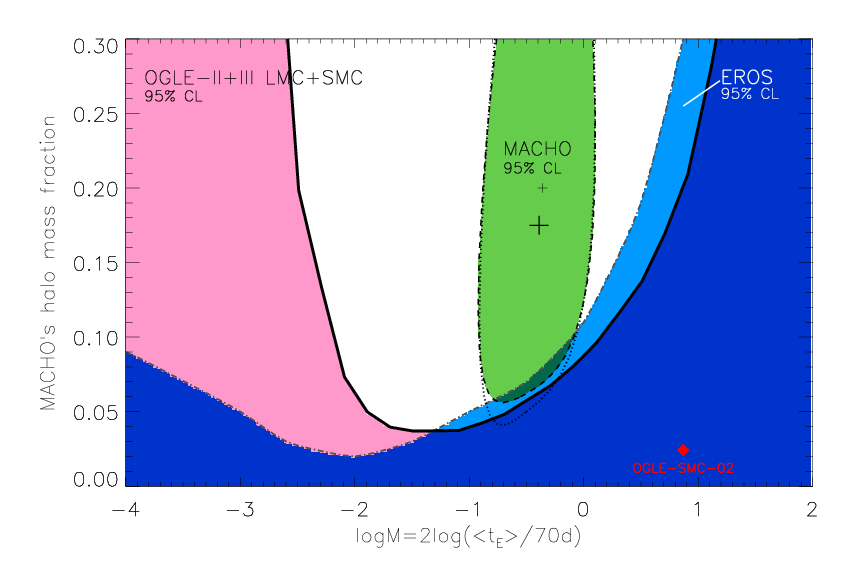
Limit on the MACHO mass fraction in the halo as a function of MACHO mass derived for three events found in OGLE-III as due to self-lensing (solid black curves). Also shown the mass fraction for events like black-hole candidate (OGLE-SMC-02) of about 2 per cent.
We concluded the studies of the microlensing searches towards the Magellanic Cloud by OGLE. Our final result obtained by combining all available data from 13 years yields strong constraints on the fraction of massive compact halo objects in the Galactic halo of 6 per cent for M = 0.1-0.4MSun and below 4 per cent for lower masses. For MACHOs with mass of 1MSun and 20MSun the upper limits are f < 9 and f < 20 per cent, respectively.
Our result indicates that baryonic dark matter in the form of relics of stars and very faint objects in the sub-solar mass regime is unlikely to inhabit the Milky Way's dark matter halo in any significant numbers. The presence of the black hole lens candidate towards the SMC agrees with the expected < 2 per cent contribution of black holes to the mass of the Galactic halo.
The data, including light curves of events and efficiency curves, is available in
the OGLE Internet archive or
here.
PLEASE cite the following paper when using the data or referring to
these OGLE results:
Wyrzykowski et al., 2011,
MNRAS, in press
(astro-ph/1106.2925)
Any comments about the results, the data and the form of their presentation are welcome.
Send your messages to this address.
 back
back